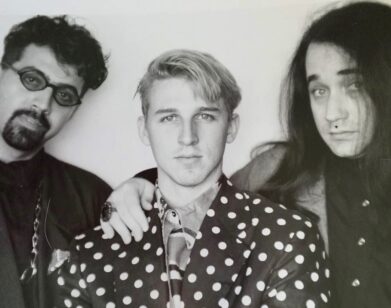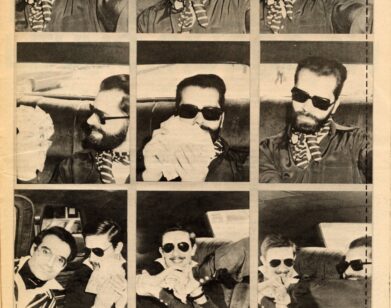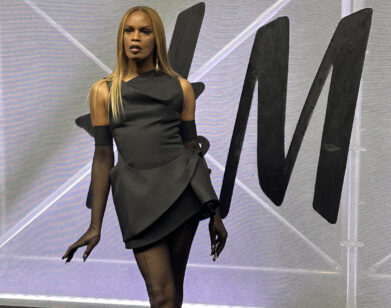trend cemetery
Trend Cemetery: Long Live Mugler
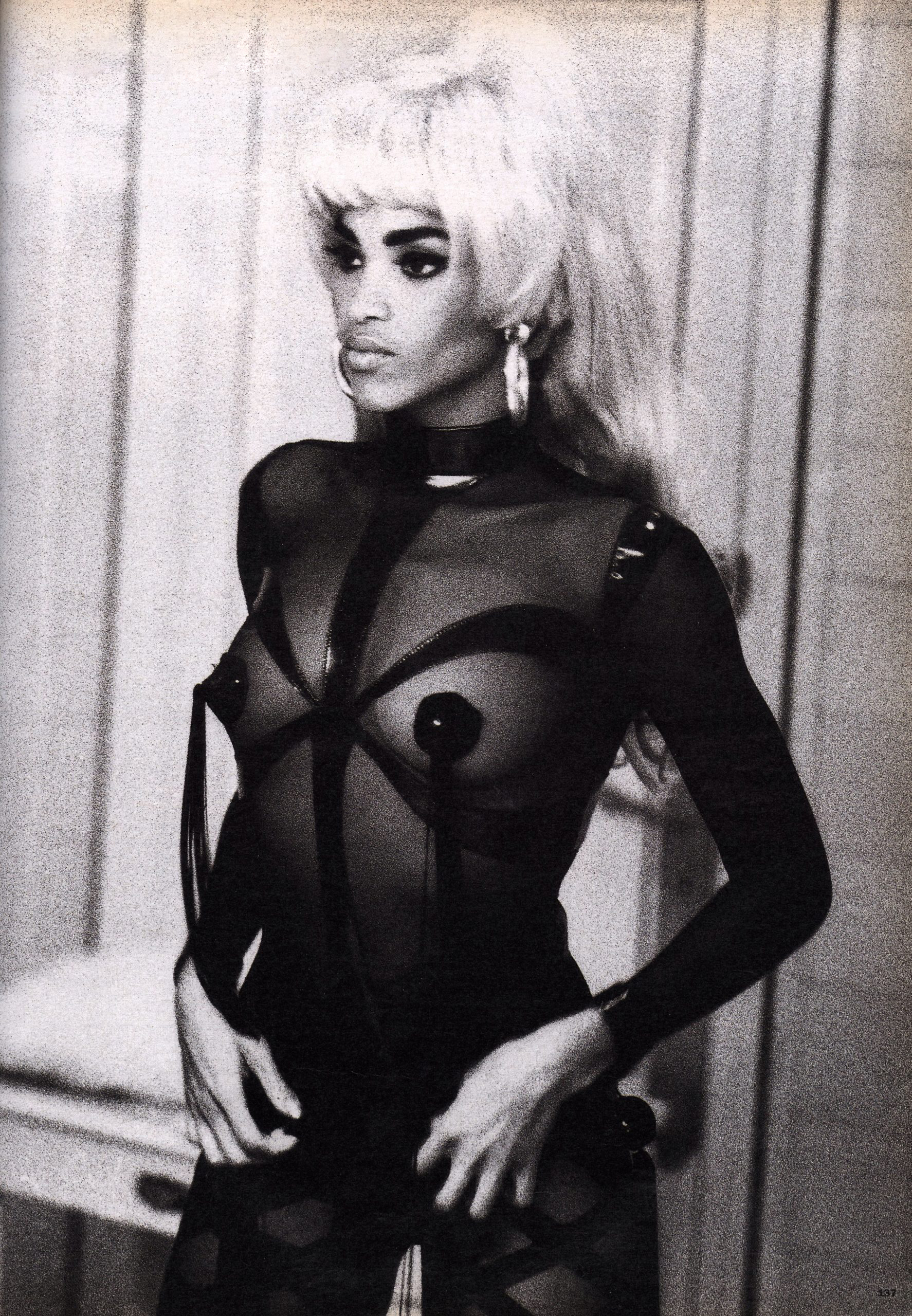
From Interview’s March 1991 issue. Photo by Ellen Von Unwerth.
Welcome to Trend Cemetery, a new bi-weekly column where our Senior Editor Taylore Scarabelli tries to make sense of meaningless micro-trends, luxury fashion, and street style in the age of social media. This week, she mourns the loss of Thierry Mugler, glamour, and André Leon Talley.
———
As the late André Leon Talley once said, “It’s been a bleak streak over here in America…It’s a famine of beauty.” That was a quote from the 2009 documentary, The September Issue, but it lands in 2022—not only because of a supposed dearth of innovation on the runways and in our feeds—but because style, in the contemporary milieu, feels devoid of glamour. In 2022, the dominant silhouette is oversized, and the most common looks at fashion events mix bright colors and logos in the way advertisements at sporting arenas might. This is not to say that we are without ostentation in fashion, but rather that our collective fashion fantasy has more to do with looking bold than it does with character building or storytelling. Bucket hats and flight jackets rear their comfortable silhouettes season after season, only slightly altered to mirror trending colorways or particular brands. And though consumers seem to be growing tired of the dominant normcore-inspired fashion du-jour, we continue buying bigger boots and bags, all in the hopes of getting attention online, and off.
This past week, the passing of both A.L.T and Manfred Thierry Mugler, two fashion giants who stood for beauty, innovation, and most importantly, magic, has led fashion insiders and fans alike to reconsider how the industry has changed over the past 20-odd years. Now, not only is it rare to come across fashion critics who are both tastemakers and provocateurs, like Talley, but it’s also unlikely that we will ever see a designer match the spectacular, festival-like showcases once put on by Mugler. In fact, it’s hard to imagine any house competing with the extravagance, innovation, and joie de vivre showcased by the brand during its heyday in the ‘90s, when couture collections included over 300 looks, and supermodels gave theater-like performances on the runway. Of course this has a lot to do with budgets (no brands, save for maybe Philip Plein, dole out money for extravaganzas like Mugler’s), but it also has to do with imagination, and the way that the fashion industry has put branding and nostalgia before beauty.
Last Friday I went to a birthday party for a well-known and loved New York designer. The party was fun, (the DJs were great, as was the spectacle put on by a brand that, like Mugler, knows how to entertain a crowd.) But that didn’t stop people at the bar from gossiping about Men’s Fashion Week. Several friends and acquaintances groaned about big brands putting out basic looks, and their belief that no one in fashion is doing anything exciting. “I only want to buy vintage,” a friend confessed, her head encircled by a delicate baby blue crown of fur. “It’s the only thing that excites me these days.”
A lot of us can’t help but agree. Not only is vintage fashion more affordable, and friendlier to the earth, but it also carries clout, particularly when it’s from a cherished designer who’s no longer making work. But this nostalgia for decades past has had a real impact on the industry, particularly when brands know that reissuing old accessories and silhouettes is a quick way to earn returns. Take Mugler, for example. Rather than carry on the innovative, sci-fi-inspired ethos of the house, the newly revived ready-to-wear line is derivative of looks that came before it. Cinched waists and broad shoulders with underwhelming tailoring share the runway with catsuits reminiscent of custom fits for pop stars past, only without all the trims and accoutrement. But it’s not only Mugler, nearly every brand today is appealing to the past as a means of generating attention in the present, whether it’s reissuing old designs, or casting the supermodels who helped make fashion so exciting in the ‘90s and early aughts.
“The future is based on the past, so why not reuse things from the past to make a better future?” Manfred Thierry Mugler asked in a 2019 conversation with Tippi Hedren for Interview. I can’t help but agree. Like art, fashion is expected to incorporate historical references, but when everyone is so caught up in revivals, it’s hard to innovate, let alone imagine a different future. This is not to say that we shouldn’t celebrate legacies, but that there should be an emphasis on innovation amongst designers today. In fact, if there’s one thing that Cadawaller’s Mugler does extremely well, it’s iterating on what a runway show should look like in an era when IRL events face cancellations, and flying editors across the globe to preview collections is frowned upon. For their Spring ’21 and Fall/Winter ’22 shows, the brand tapped TORSO to create uncanny, experimental fashion films that played with our perception, a Mugler-inspired extravaganza fit for the digital age.
In this case, looking to the past may not be such a bad thing. If more brands bank on nostalgia, then perhaps we’ll all focus on greener forms of consumption, rather than consistently feeding the fashion machine. But if we’re really interested in reviving the glory days of style, perhaps it’s better we look to the forefathers of fashion for advice. For both A.L.T and Mugler, fashion was about beauty and self-expression, about making the most of a world so often devoid of hope. It can be sad sometimes, as A.L.T was quoted saying in Interview, but it can also get us through moments of angst or strife.
This fall, I finally scored the vintage Thierry Mugler suit of my dreams. It has the brand’s classic silhouette: wide shoulders, a snatched waist, and a skirt so short and tight that the seam ripped the first time I attempted to gracefully slide into a cab in hip hugging wool. But that didn’t stop me from wearing the suit on New Year’s Eve, rear-end drama and all. A severe, all-black set that made me feel like a super villain was the only appropriate look to ring another apocalyptic new year.
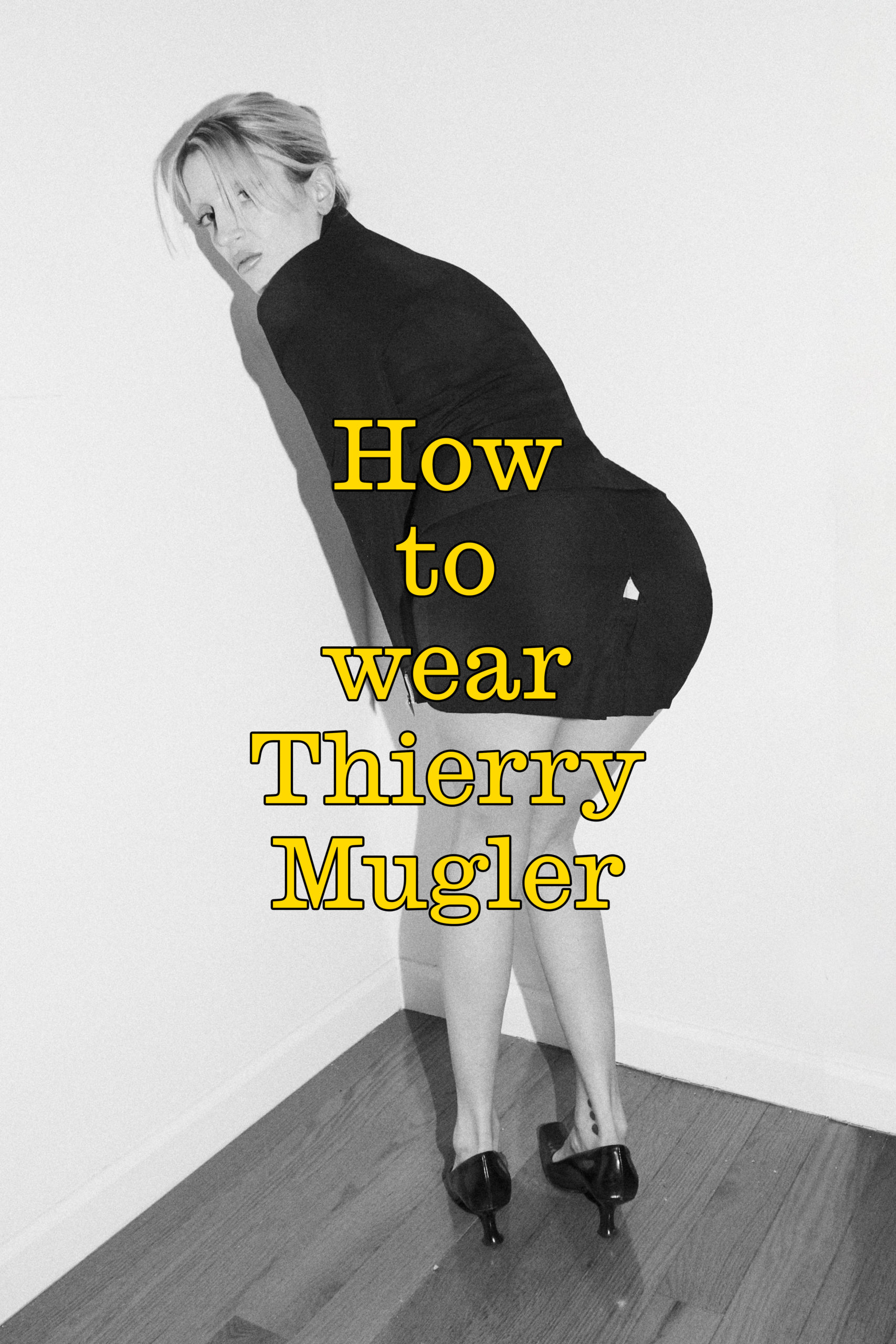
Photo by Ben Taylor

